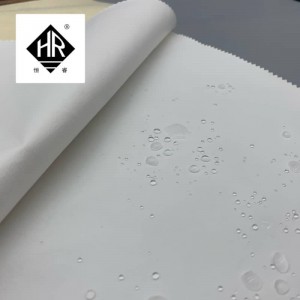I. Classification of flame retardant fabrics.Insulating fabric Insulating fabric
Flame retardant fabrics can be divided into:
1. Permanent flame retardant fabric (fiber weaving,Insulating fabric Insulating fabric no matter how many times, the flame retardant effect is unchanged)
2. Washable (over 50 times) flame retardant fabric.
3. Semi washable flame retardant fabric.
4. Disposable flame retardant fabric Insulating fabric Insulating fabric (decorative. Curtains, seat cushions, etc.)
Second, the production process of flame retardant fabrics and the introduction of additives can be divided into: fiber flame retardant treatment and fabric flame retardant finishing.
Treatment of flame retardant fabric:
1. Flame retardant mechanism refers to the addition of some self-flammable prefilament (such as polyester, cotton fiber) with some flame retardant to inhibit the free group in the combustion process; Or change the fiber pyrolysis process, promote dehydration carbonization; Some are flame retardants that break down and release nonflammable gases that coat the surface of the fibers and act as a barrier to air.
2) Flame retardant modification of the original silk.
Textile flame retardant finishing:
1. Flame retardant mechanism.
1) Film covering principle: a flame retardant at high temperature can form a glassy or stable foam layer, with insulation. Oxygen insulation. Prevent combustible gas leakage, play a fire protection role.
2) non-flammable gas theory: the thermal decomposition of flame retardant produces non-flammable gas, so that the combustible gas concentration after cellulose decomposition falls below the lower limit of combustion.
Heat absorption principle: Flame retardant at high temperature, produce heat absorption reaction, reduce the temperature, prevent the spread of combustion. In addition, after finishing the fabric, the heat energy is rapidly distributed outward, resulting in the cellulose cannot reach the combustion temperature.
2. Finishing method of flame retardant fabric.
1) Leaching roasting: It is one of the most widely used processes in flame retardant finishing process. The process is dipping – pre – baking – post – treatment. The rolled liquid generally includes flame retardants, catalysts, resins, wetting agents, softeners, formulated as aqueous solutions or emulsions.
2) Impregnation and baking (absorption) : the tissue is soaked in flame retardant for a certain time, and then dried and baked, so that the flame retardant solution is absorbed by fiber polymerization.
3) Organic solvent method: the use of insoluble flame retardant, with the advantages of flame retardant finishing. In practice, attention should be paid to the toxicity and combustion performance of the solvent.
4) Coating method: the flame retardant is mixed with resin, and the flame retardant is fixed on the fabric by bonding the resin. According to the machine equipment is divided into scraping method and pouring method.
Post time: Nov-02-2022

